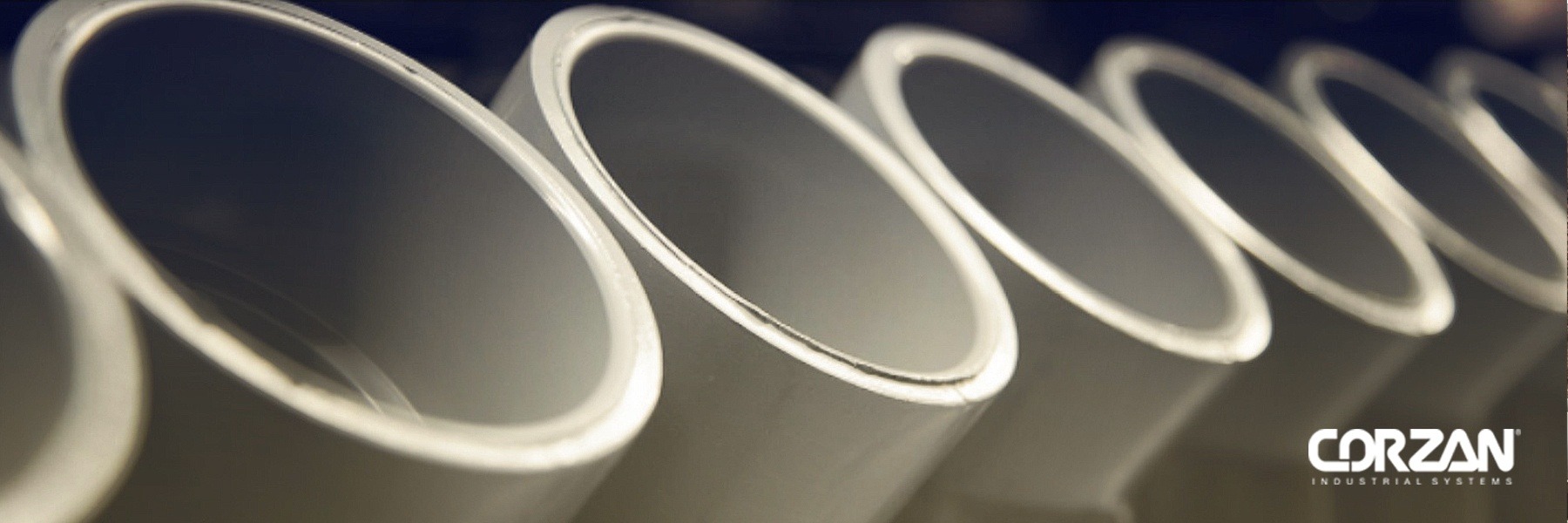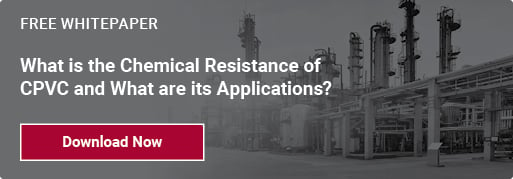How CPVC Chemical Compatibility is Determined
This post is an excerpt from the white paper, Chemical Resistance and Chemical Applications for CPVC Pipe and Fittings.
When considering a piping material for your industrial application, it’s important to evaluate its compatibility with the chemicals you’ll be transferring and storing.
CPVC is a widely used piping material because of its superior resistance acids, bases and salts.This compatibility has been proven over nearly 50 years of experience in the field, the chemical resistance capabilities of CPVC have been confirmed through work with numerous outside testing laboratories around the world.
Equally important is the fact that chemical resistance has been determined, and confirmed, using two widely accepted standards:
- ISO 22088
- ASTM D543
ISO Evaluation
Part of ISO 22088 specifies methods for the determination of Environmental Stress Cracking (ESC) of thermoplastics when subjected to a constant tensile load in the presence of chemical agents.
Under this standard, materials are fully immersed in the chemical agent. If the chemical is highly viscous at the test temperature, the specimen is covered by a coating that is at least 2mm thick. During immersion, a constant tensile load is applied parallel to the longitudinal axis. In general, the maximum amount of stress to be applied is determined as being that which produces an elongation of 2% after one hour.
The ISO test can be conducted using two different approaches.
- The first approach utilizes a series of tests that increase the amount of stress until the material sample ruptures.
- In the second approach, the goal is to identify the amount of time it takes to rupture the material sample when subjected to a single stress load.
In either case, the test is run multiple times to ensure accurate results.
ASTM Evaluation
ASTM International has also developed standard practices for evaluating the resistance of plastics to chemical reagents. Standard D543 covers all plastic materials and provides specific guidelines as to how to administer the testing. This includes requirements on:
- Preparing the samples
- Conducting the actual tests
- Reporting the results
Similar to the ISO testing standard, there are two approaches that can be taken under ASTM D543.
- In the Immersion Test, the sample is totally immersed for a minimum of seven days. At the completion of the test, the sample is re-weighed and re-measured and compared against its weight and measurements prior to immersion. The pipe surface is also observed for possible changes in texture, discoloration, swelling, clouding, tackiness, bubbling or cracking.
- In the Mechanical Test, the sample is also exposed to the chemical reagent for a minimum time period, but during exposure, an external stress is applied (similar to ISO testing).
Even though both internationally accepted standards have proven reliable in their ability to determine a product’s chemical resistance, many pipe manufacturers still recommend that a test be conducted to replicate a plant’s process conditions. This will help to validate the expected reliability of the pipe in the presence of a specific chemical.
Chemical Compatibility Requires Many Considerations
Refer to Corzan® Industrial Systems’ Chemical Resistance Table for a full listing of chemicals that are both recommended and not recommended for use with CPVC piping.
Remember that chemical compatibility can be affected by many factors, including temperature, pressure and design of the system. Some piping manufacturers offer technical assistance and will actually test specific chemical formulations to determine chemical compatibility.
It is always recommended to work with the specific pipe and fitting manufacturer to determine material suitability.
It should further be noted that CPVC products are made with base resins having different molecular weights and chlorine content, as well as different compound additives. Therefore, it is always recommended to check with a specific pipe and fitting manufacturer before confirming actual chemical resistance capabilities and compatibility.
Is Corzan® CPVC Right For Your Application?
This blog post is an excerpt from the white paper, Chemical Resistance and Chemical Applications for CPVC Pipe and Fittings, by Lubrizol R&D Scientist, Michelle Knight. The purpose of this post and the full white paper is to present a more detailed analysis of the chemical resistance capabilities of CPVC. The white paper will provide specifiers and installers with information about those applications in which CPVC performs the best, as well as those in which its use may be limited or not recommended at all.
To learn more about CPVC’s capabilities for your industrial applications, download the full white paper.
Have questions? Contact us to speak with a Corzan Industrial Systems engineering and product specialist.


